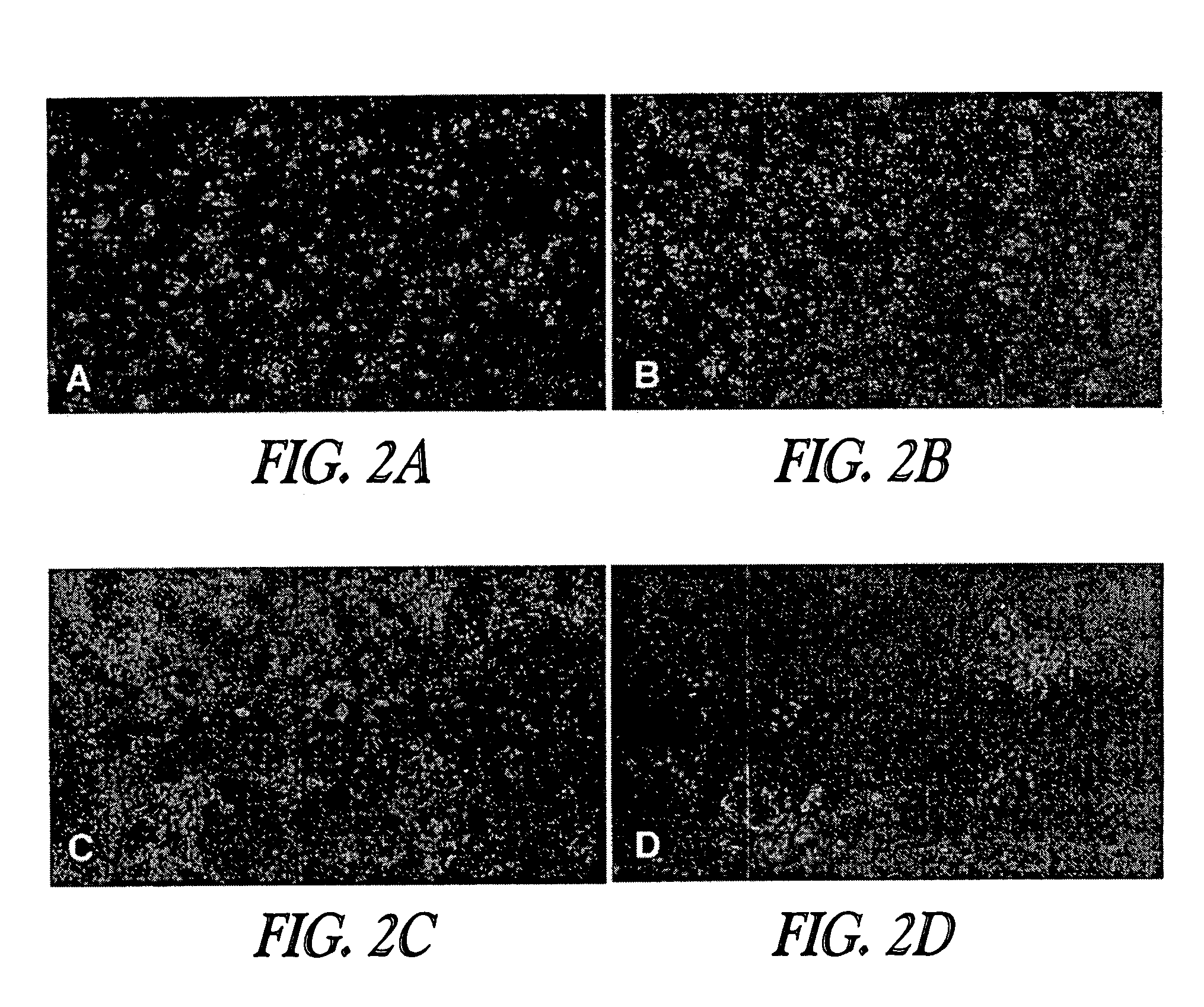Peptides that inhibit viral infections
a technology of peptides and antiviral agents, applied in the field of peptides, can solve the problems of few effective antiviral agents available, difficult treatment of viral diseases,
- Summary
- Abstract
- Description
- Claims
- Application Information
AI Technical Summary
Benefits of technology
Problems solved by technology
Method used
Image
Examples
example 1
Materials and Methods
[0175] HCV constructs and transcription. The HCV consensus clone used was derived from a Japanese patient with fulminant hepatitis, and has been designated JFH-1 (Kato et al. (2001) J. Med. Virol. 64, 334-339). This HCV cDNA was cloned behind a T7 promoter to create the plasmid pJFH-1, as well as a replication-defective NS5B negative control construct pJFH-1 / GND (Kato et al. (2003) Gastroenterology 125, 1808-1817). To generate genomic JFH-1 and JFH-1 / GND RNA, the pJFH-1 and pJFH-1 / GND plasmids were linearized at the 3′ end of the HCV cDNA by XbaI digestion. The linearized DNA was then purified and used as a template for in vitro transcription (MEGAscript; Ambion, Austin, Tex.). To generate JFH-1 strand-specific RNA probes, the inventors cloned a 1 kb fragment of the JFH-1 NS5B coding region into the pBSKII+ vector to allow for T7 and SP6-driven transcription of JFH-1 negative and JFH-1 positive strand probes, respectively.
[0176] Cell culture. The hepatic Huh-7...
example 2
Production of Infectious HCV Particles in Hepatoma Cultured Cells Transfected with HCV RNA
[0190] This Example illustrates that infectious HCV particles are efficiently produced when an HCV-negative Huh-7.5-derived cell line, referred to herein as Huh-7.5.1, is transfected with HCV RNA or cultured with supernatant from HCV RNA-transfected cells.
[0191] As described above, Huh-7.5.1 cells were derived from the Huh-7.5 GFP-HCV replicon cell line I / 5A-GFP-6 (Moradpour (2004) J. Virol. 78, 7400-7409) by curing the HCV-GFP replicon from the I / 5A-GFP-6 cells. To do this the I / 5A-GFP-6 replicon cells were cultured for three weeks in the presence of 100 IU / mL human interferon gamma (IFNã). This eradicated the I / 5A-GFP-6 replicon from the cells, thereby generating the Huh-7.5.1 cells. Clearance of the HCV replicon was confirmed by G418 sensitivity (the HCV replicon included a neomycin resistance gene) and by HCV-specific quantitative RT-PCR analysis.
[0192] Production of infectious HCV parti...
example 3
HCV Peptides Inhibit Hepatitis C Viral Infection
[0213] As described above, Huh-7 and Huh-7.5.1 cells can be infected in vitro with virus produced by an HCV genotype 2a JFH-1 clone. This Example illustrates that HCV peptides having SEQ ID NO:6, 8, 12, 13, 14, 24, 27, 30, 32, 43, 44, 47, 48 and 53 strongly inhibit HCV infection as measured using this cell culture model of HCV infection described above. Other peptides exhibited good inhibition of HCV infection. These HCV-derived synthetic peptides that were effective inhibitors were from both structural and non-structural regions of the HCV polyprotein.
[0214] A peptide library of 441 overlapping peptides covering the complete HCV polyprotein of genotype 1a (H77) (SEQ ID NO:1) was tested. The peptides were about 18 amino acids in length with 11 overlapping amino acids. The peptide library was provided by NIH AIDS Research and Reference Reagent Program (Cat #7620, Lot #1).
[0215] To identify peptides that display antiviral activity aga...
PUM
| Property | Measurement | Unit |
|---|---|---|
| Fraction | aaaaa | aaaaa |
| Molar density | aaaaa | aaaaa |
| Molar density | aaaaa | aaaaa |
Abstract
Description
Claims
Application Information
 Login to View More
Login to View More - R&D
- Intellectual Property
- Life Sciences
- Materials
- Tech Scout
- Unparalleled Data Quality
- Higher Quality Content
- 60% Fewer Hallucinations
Browse by: Latest US Patents, China's latest patents, Technical Efficacy Thesaurus, Application Domain, Technology Topic, Popular Technical Reports.
© 2025 PatSnap. All rights reserved.Legal|Privacy policy|Modern Slavery Act Transparency Statement|Sitemap|About US| Contact US: help@patsnap.com



